

The magazine of the photo-essay

March 2018 back issue
The Veda Patasala:
A Joyful Life of Dedication
by Chris Dade

“A free, really high quality photo-essay magazine. Fabulous!”
Stephen Fry. British actor, writer and film maker

In the heart of the Southern Indian city of Tiruvannamalai, is a special place where people gather from all around the
world. Within the hustle and bustle of this busy city sits the ashram of Ramana Maharshi, a place of profound peace.
Ramana, a great sage of India, was famous for his silence and the sense of grace he embodied. Those who visit say his
presence is as potent now as it was during his life time.
On my first visit to the ashram I recall the contrasting silence of this place in comparison to the chaotic external world.
Then out of this silence, as I approached the main temple, came the bold yet divine chanting calling me in. There, sitting
upright at the centre of the temple, head-shaven bodies painted with white stripes, were a group of boys chanting with
full force. Meanwhile, a large group of people circumnavigated the altar area seemingly blown around by this powerful
gust of voices. The sight was striking enough but the sound of the chants demanded I sit and fall into silence. I was so
taken by the moment, I knew I had to record and share the experience.
Within the grounds of the ashram is a school called a Veda Patasala. It can truly be said this is no ordinary school. The
institution is dedicated to the skilful and holy art of chanting the Veda’s, a large body of Hindu scriptures originating from
ancient India. These texts, carefully preserved since ancient times, are composed in Vedic Sanskrit. Hindus consider the
Vedas to be ‘apauruṣeya’, which means "not of man.” It is believed by intently listening to the holy sounds of the Vedas, the
mind can be purified and reach a profound level of consciousness. The chanting sessions called Veda Parayana are
continuously held twice daily, morning and evening, the same as it was during Ramana’s life time. After listening to the
chanting, each day Ramana would sit immobilised for an hour in a state of great bliss.
The students of the Vedic school truly live a life of dedication. From the moment they awake at 4:30 am, they begin
advanced study techniques to memorise and chant a massive body of Sanskrit scriptures. This is both their school and
their home. Families are visited only once a year. These boys have given their life to this art. Living a very simple life
without possessions, studying seven days a week, I was humbled to see these young lives following such rigorous
disciplines. However amongst this intense study there is great essence of joy. It is as if the Vedic chants carry them
throughout each day, not just being their life, but also their strength and happiness.
During one of my visits, I asked a student at what age do they finish studying? He looked at me as if confused, and then
paused. With a twinkle in his eye he replied, “You never finish the Vedas.” In another encounter I congratulated one of the
pandit teachers regarding the skills and the beauty of the delivery of his students. He just smiled and said, “Its not to do
with me, this is all by Ramana’s grace.” Certainly, having had the honour of spending time in this unique ashram
absorbing these chants daily, there is a presence beyond words that seemed to penetrate me generating a state of great
peace.
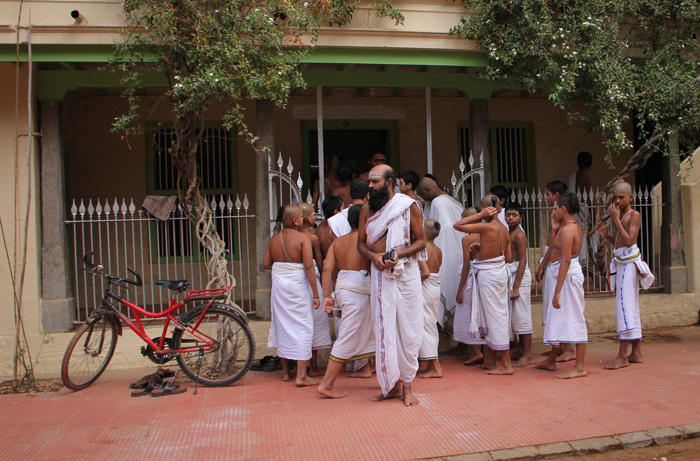
The students gather for a morning lesson.
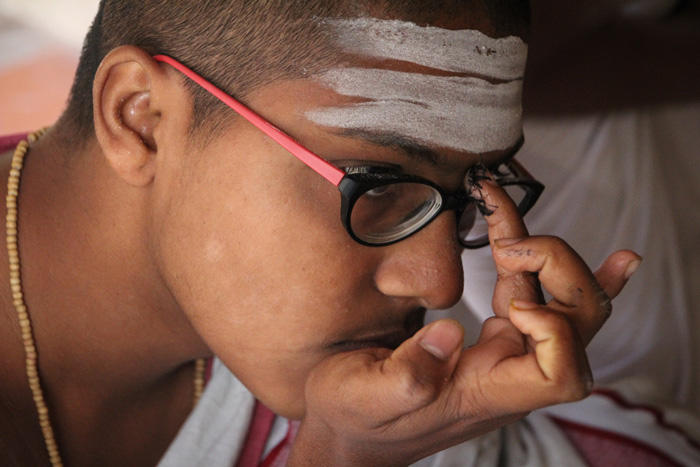
Morning and evening each boy adorns points on their body with ash.
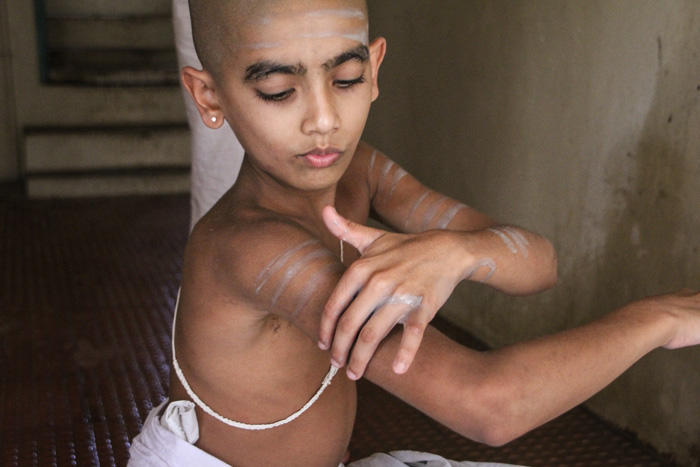
Using the ash they also paint their bodies with three white stripes, a symbol of Lord Siva.
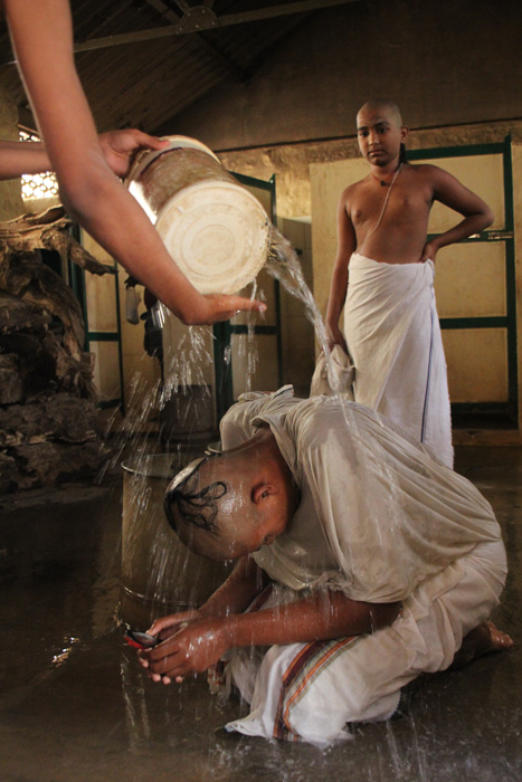
Each month in a ceremony the boys shave their heads minus a tuft at the back. After the
process they are not allowed to touch their head so buckets of water will be poured over
them.
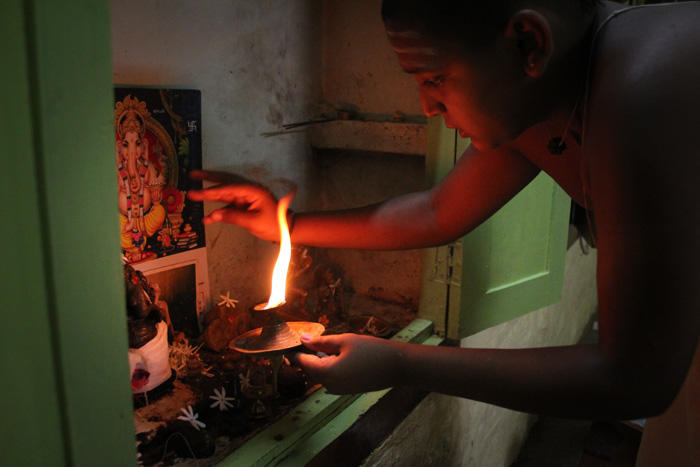
Each morning an offering called a puja is made to the dieties and icons on the schools altar.
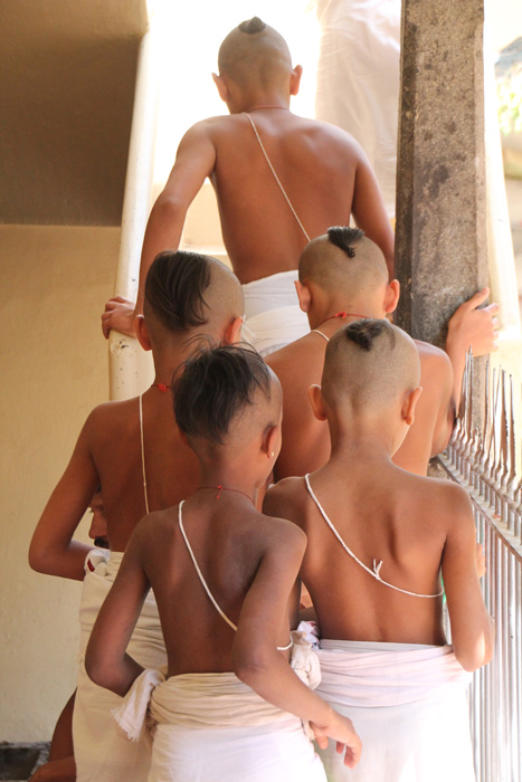
The students wear a sacred thread, called a Yagnopavitam which is placed over their left
shouder. This thread is a composite of 3 threads, signifying Goddesses Gayatri (thought),
Saraswati (word) and Savitri (deed) respectively.
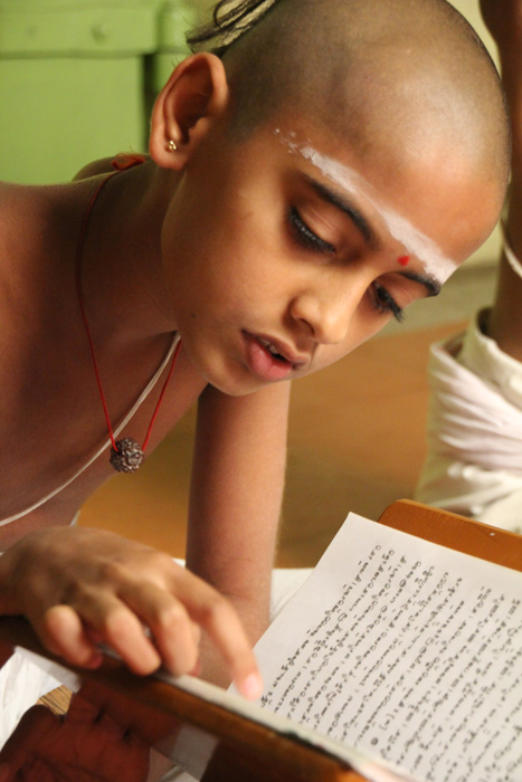
The boys study the Veda in a Brahmic script called ‘grantha.’
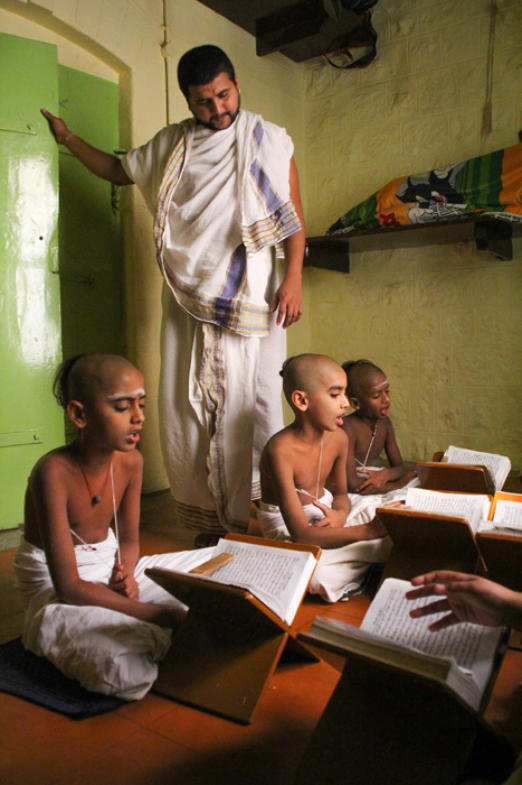
‘Pandits’ who have studied the veda themselves as children hand down the knowledge.
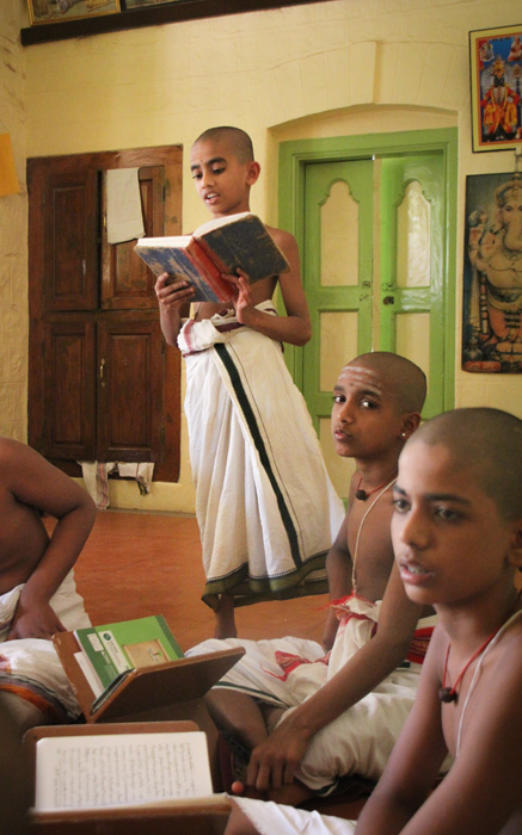
One of the newer students recites in front of the class.
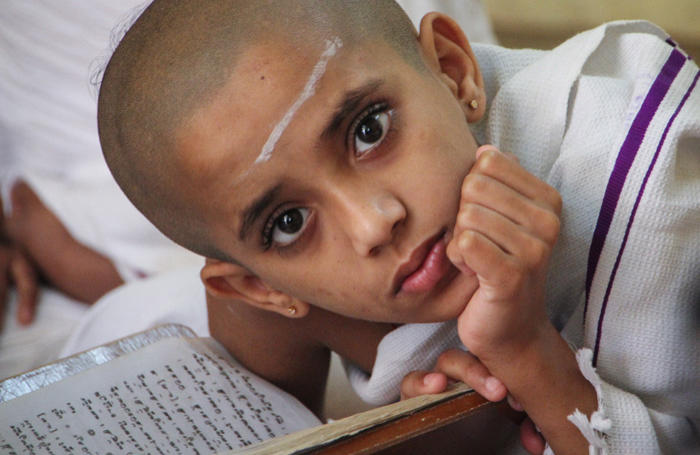
Students start the school as young as six years old.
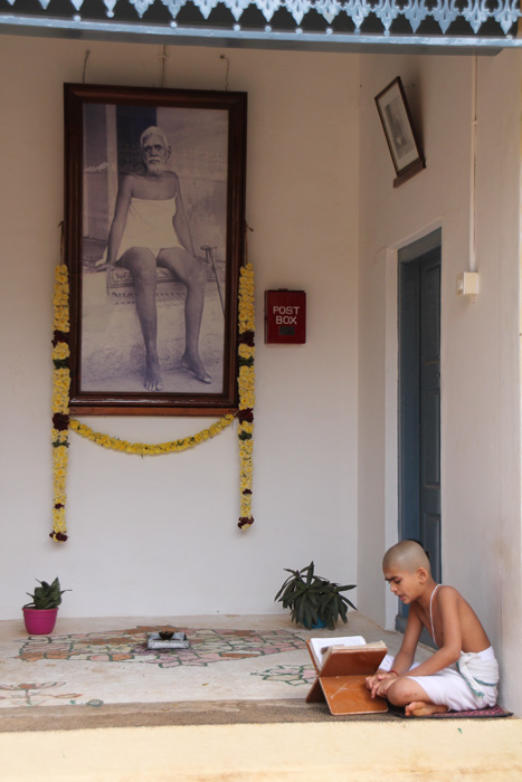
A student studying under a picture of Ramana who inspired the ashram.
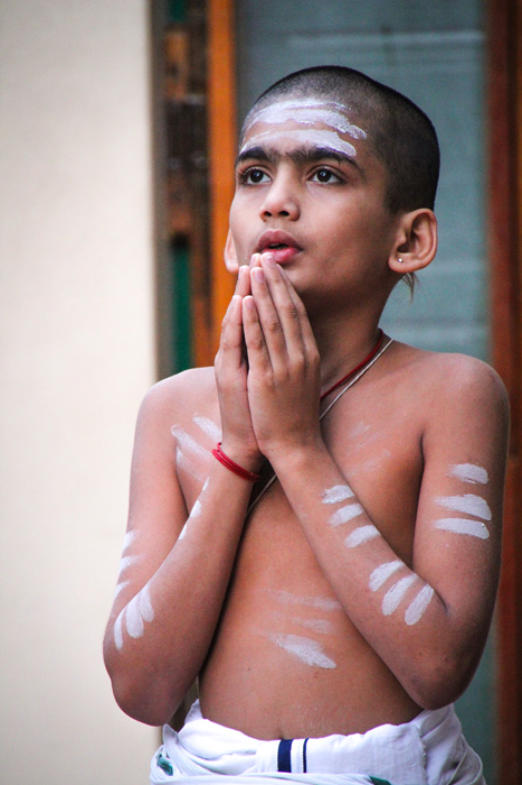
One of the students venerating the 4 cardinal directions.
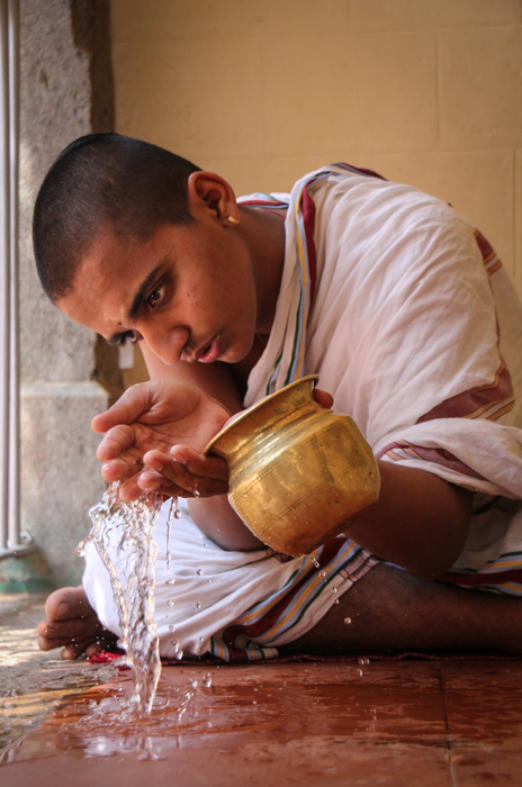
A student performing one of the three daily purification rites.

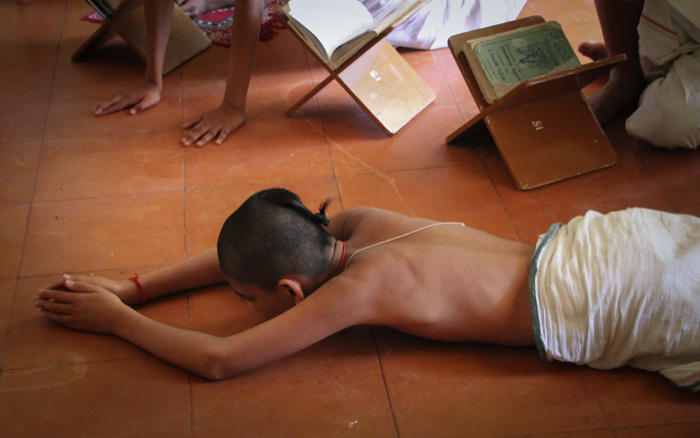
Thanks are offered at the end of each lesson with a prostration.
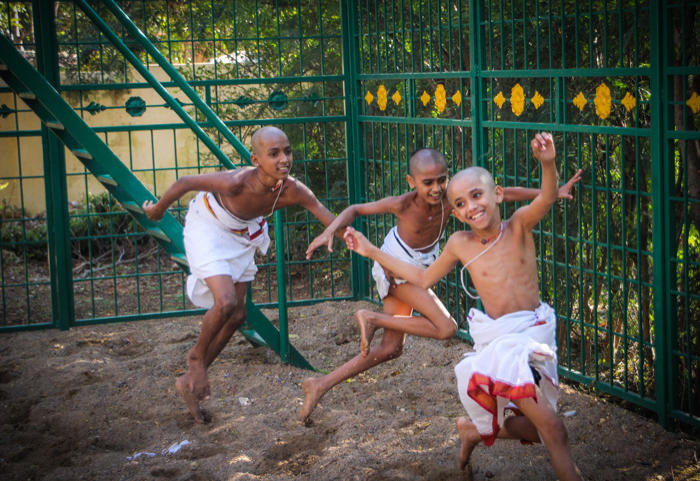
The boys have an hour each afternoon to play in the ashram park.
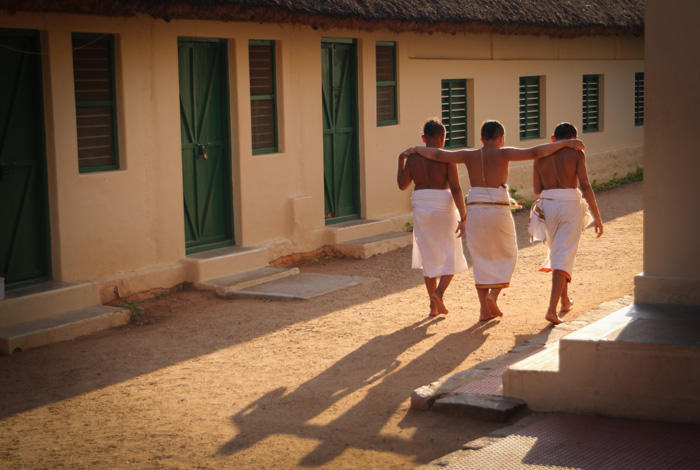
There is a real sense of brotherhood amongst the boys.
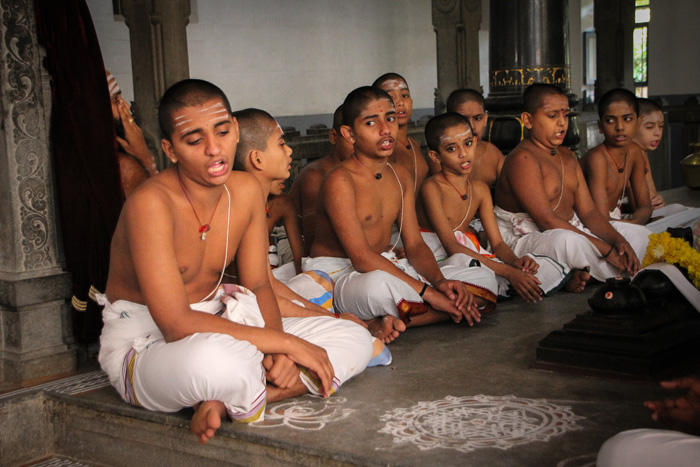
One of the two daily public recitations performed in Ramana’s shrine.
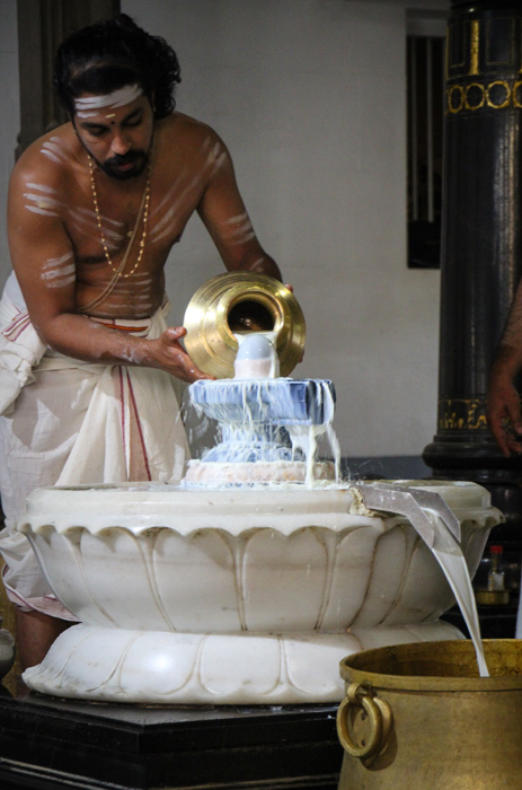
Anointing the Shiva lingam with cows milk in Ramana shrine while charting takes place.
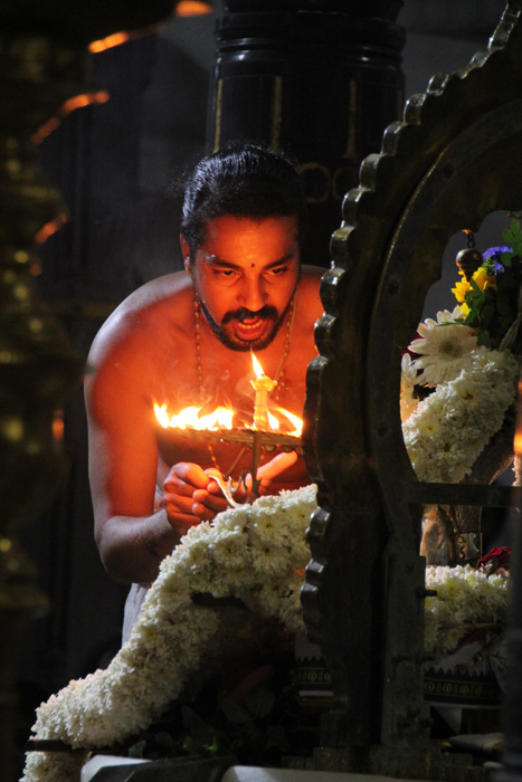
Venerating the lingam by waving a flame.
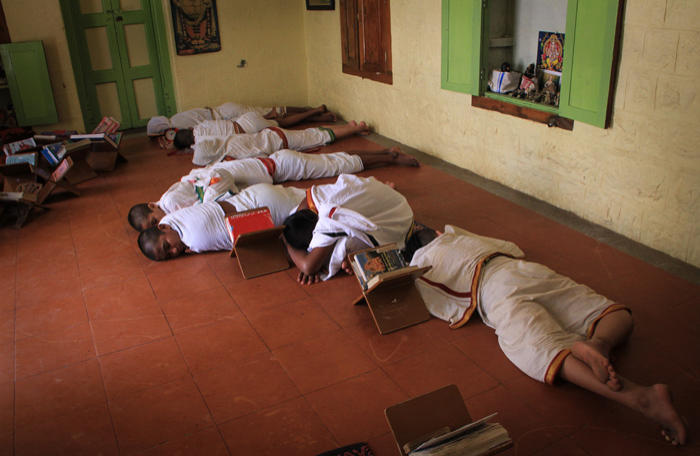
The boys lead a very simple life of dedication. They rest and sleep together on the school floor.










